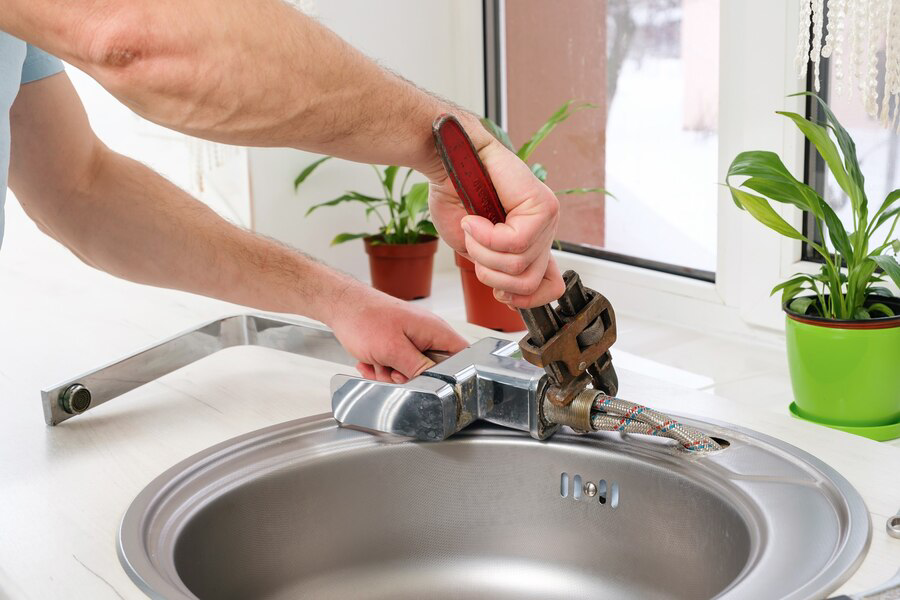In the intricate dance of new home construction, every player has a crucial role to ensure the final masterpiece stands strong and functional. Amidst the flurry of architects, contractors, and electricians, one often unsung hero quietly ensures the heartbeat of the home: the plumber. Their role is not merely about fixing leaks or unclogging drains; rather, it’s an intricate blend of foresight, precision, and expertise that lays the foundation for a smoothly flowing household.
In this comprehensive guide, we delve into the multifaceted responsibilities of a plumber in new home construction, exploring what to expect when embarking on this pivotal aspect of the building process. From collaborating with architects to strategically laying out piping systems, to meticulously installing fixtures, the plumber’s contribution extends far beyond the visible surface, ensuring the longevity and efficiency of a home’s water infrastructure. Join us as we uncover the invaluable role plumbers play in crafting the homes of our dreams.
Water Supply: Bringing Clean Water to Every Tap
In the intricate web of new home construction, few elements are as essential as the provision of clean, potable water. The role of the plumber in ensuring this vital resource reaches every tap cannot be overstated. From the initial planning stages to the final inspection, the journey of water supply installation is a meticulous process designed to guarantee safe and reliable access to fresh water for years to come.

- Planning and Preparation: Before a single pipe is laid, the plumber meticulously studies the blueprints and collaborates with other professionals involved in the construction process. Understanding the layout of the home and its water needs is crucial in determining the optimal placement of water supply lines.
- Selecting Quality Materials: With the plan in hand, the plumber selects high-quality materials for the water supply system. From durable pipes to reliable connectors and fittings, every component is chosen with longevity and efficiency in mind, ensuring the integrity of the system over time.
- Installation of Main Water Lines: The backbone of the water supply system is the main water line, which connects the home to the municipal water source or private well. The plumber carefully installs this line, taking into account factors such as depth, pressure, and distance to ensure a steady flow of water to the property.
- Branching Out: Supply Lines to Fixtures: From the main water line, supply lines branch out to various fixtures throughout the home, including sinks, showers, toilets, and appliances. The plumber expertly installs these lines, taking care to minimize bends and obstructions that could impede water flow.
- Pressure Regulation and Control: Maintaining optimal water pressure is essential for the efficient operation of plumbing fixtures and appliances. The plumber installs pressure regulators and control valves as needed to ensure consistent water pressure throughout the home, preventing damage to pipes and ensuring a comfortable experience for the occupants.
Beyond Construction: Maintenance and Service
In the realm of new home construction, the role of a plumber extends far beyond the installation phase. Once the keys are handed over and the homeowners move in, the plumber’s responsibilities shift towards maintenance and service, ensuring the plumbing system continues to function smoothly for years to come.

Regular Inspections
Regular inspections are crucial to identifying potential issues before they escalate into costly repairs. Plumbers can conduct thorough inspections of the entire plumbing system, checking for leaks, corrosion, or any signs of wear and tear.
Drain Cleaning
Over time, drains can become clogged with debris, grease, and other substances, leading to slow drainage or blockages. Plumbers utilize various techniques such as snaking or hydro-jetting to clean out drains and restore optimal flow.
Fixture Maintenance
Plumbing fixtures like faucets, toilets, and showers require periodic maintenance to ensure they operate efficiently. Plumbers can inspect and repair fixtures, replace worn-out parts, and address any issues with water pressure or temperature regulation.
Water Heater Service
Water heaters are essential for providing hot water to the home, but they require regular maintenance to function efficiently and prevent malfunctions. Plumbers can flush the tank to remove sediment buildup, inspect the heating elements, and address any issues with temperature or pressure relief valves.
Leak Detection and Repair
Even small leaks can lead to significant water damage if left unchecked. Plumbers have the expertise and equipment to detect hidden leaks within walls, floors, or ceilings and perform timely repairs to prevent further damage.
Testing and Inspection: Ensuring Quality and Compliance
In the intricate process of constructing a new home, one crucial stage that ensures the reliability and safety of the plumbing system is testing and inspection. This phase is where meticulous scrutiny and adherence to regulations come into play to guarantee that the plumbing infrastructure meets all necessary standards. Let’s delve into the details of this essential aspect of new home construction.
Preparing for Inspection
Before the inspection takes place, the plumbing team ensures that all installations are complete and up to code. This involves verifying that all pipes are securely in place, fittings are properly sealed, and fixtures are correctly installed according to the blueprint specifications.
Pressure Testing
One of the primary tests conducted during this phase is pressure testing. This involves pressurizing the plumbing system to check for any leaks or weaknesses. By increasing the pressure beyond normal operating levels, plumbers can identify any potential issues that could arise once the system is in use. This step is crucial for preventing water damage and ensuring the longevity of the plumbing infrastructure.
Inspecting Drainage Systems
In addition to pressure testing, thorough inspection of drainage systems is essential. Plumbers examine the slope and alignment of drainage pipes to ensure proper flow and prevent clogs or backups. Venting systems are also inspected to prevent the buildup of harmful gasses and maintain proper air circulation within the plumbing network.
Compliance with Building Codes
Throughout the testing and inspection process, plumbers work closely with building inspectors to ensure that all aspects of the plumbing system comply with local building codes and regulations. This includes proper sizing of pipes, adequate ventilation, and adherence to safety standards for materials and installation methods. Any discrepancies or issues identified during the inspection must be promptly addressed to meet regulatory requirements.
Documenting and Certifying
Upon successful completion of testing and inspection, plumbers provide documentation certifying that the plumbing system meets all necessary standards and regulations. This documentation is crucial for obtaining final approval from building authorities and ensuring the home is ready for occupancy.
Conclusion
As homeowners embark on new construction projects, understanding the pivotal role of a plumber becomes paramount, and EZI Plumbing stands ready to meet those needs with expertise and efficiency. From laying the groundwork for essential water and sewage systems to ensuring the seamless integration of fixtures and appliances, we at EZI Plumbing in Chain Valley Bay, NSW, Australia, are dedicated to delivering unparalleled service and support throughout every stage of the construction process. With our commitment to excellence and customer satisfaction, clients can trust in our reliable solutions to uphold the integrity and functionality of their new homes for years to come. Contact us at +61 448467788 to experience the EZI Plumbing difference firsthand.

